A closer look at the top receivers the Vikings could target on draft night

You could look at 20 mock drafts in a row and not find a single one projecting the Minnesota Vikings to take a wide receiver. But that doesn't seem quite right with offensive head coach Kevin O'Connell in place and the team looking to get the most out of Kirk Cousins.
The Vikings have already spent their free agent dollars on the defensive side, so the strong receiver class expected to start coming off the board in the middle of the first round may be a good way for new GM Kwesi Adofo-Mensah to break the Rick Spielman mold and go all-in on offense.
Let's have a look at the top projected receivers.
USC’s Drake London
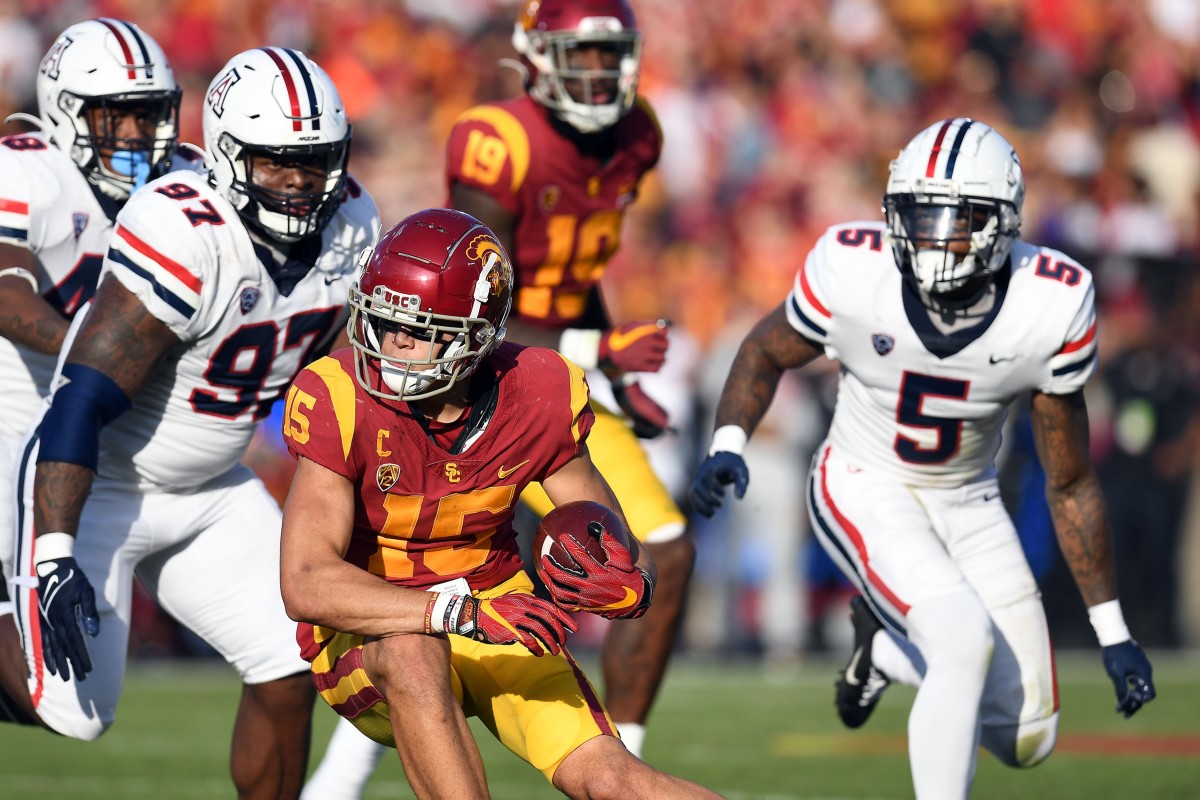
Each of the top-WRs represents different prototypes. Drake London is the traditional Mike Evans- go-up-and-grab-it type. London isn’t going to burn you with speed but at 6’4, 220 pounds he has the size and physicality to be a weapon.
“Drake London is a monster, to be honest,” said Shotgun Spartling, writer for USCFootball.com. “...USC’s offense was super one-dimensional. It was a Drake London air raid.”
The numbers show that. London played in just eight games last season as an ankle injury kept him out for the last two months of the season. However, he averaged 15 targets per game in those eight games and 88 receptions. He had a 91.2 PFF grade and had 17 contested catches, tied for best in the country despite the missed games. He was also 8th in missed tackles and 11th in deep catches.
He also isn’t just an outside receiver.
“USC used him a lot in the screen game. They basically just wanted to get the ball in his hands over and over,” Spratling said.
London ranked in the top-25 in both screen catches and yards. And before 2021, he spent the majority of his first two seasons in the slot before transitioning to the outside last season.
In PFF’s draft guide, they say “London's going to be a 100-catch, 10-touchdown-a-season guy sooner rather than later.” That sounds like a WR1.
Alabama’s Jameson Williams
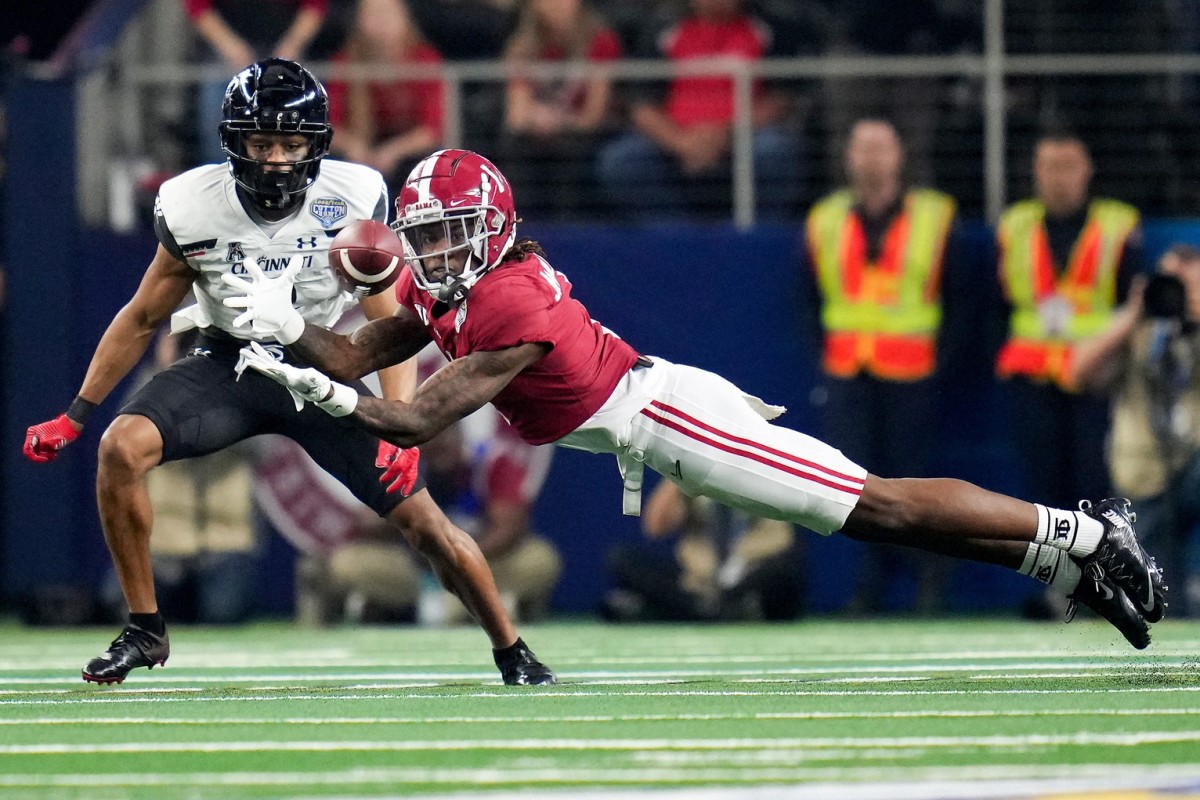
Normally draft risers rise because of a great pre-draft process. They have a stellar senior bowl week or an outstanding combine. They put together a crazy pro day and wow in private team meetings.
Jameson Williams has not been able to do any of that because of an ACL injury he suffered in the National Championship. Yet he continues to rise up draft boards. That’s a testament to his speed. And it’s why he could be the best receiver in the draft.
“He just has that next-level speed that you can’t account for,” said Nick Kelly, Alabama football reporter for the Tuscaloosa News. “It’s that scary speed where you can’t counter it as a defensive coordinator.”
That shows up in his production. Williams caught 115 passes for 1561 yards in 2021, averaging 20 yards per catch. Against Georgia in the SEC Championship Game, he had 175 yards and two touchdowns.
“Some teams see that Tyreek Hill scariness,” Kelly said. “He’s that kind of guy.”
His deep threat ability is tantalizing. PFF called him the best deep threat in the class. He had the 6th most deep receiving yards in the FBS and the avered 9.3 yards after the catch, also 6th best in the country. He ranked No. 32 in slot yards despite lining up in the slot for just over a third of snaps.
For the Vikings, that would give them a piece that can truly take the top off the defense. His only question mark is the ACL. But we’ve seen many athletes return and look exactly like they did pre-injury. If that’s the case, look out, Kelly said.
“Some teams see that Tyreek Hill scariness,” Kelly said. “He’s that kind of guy.”
Ohio State’s Garrett Wilson
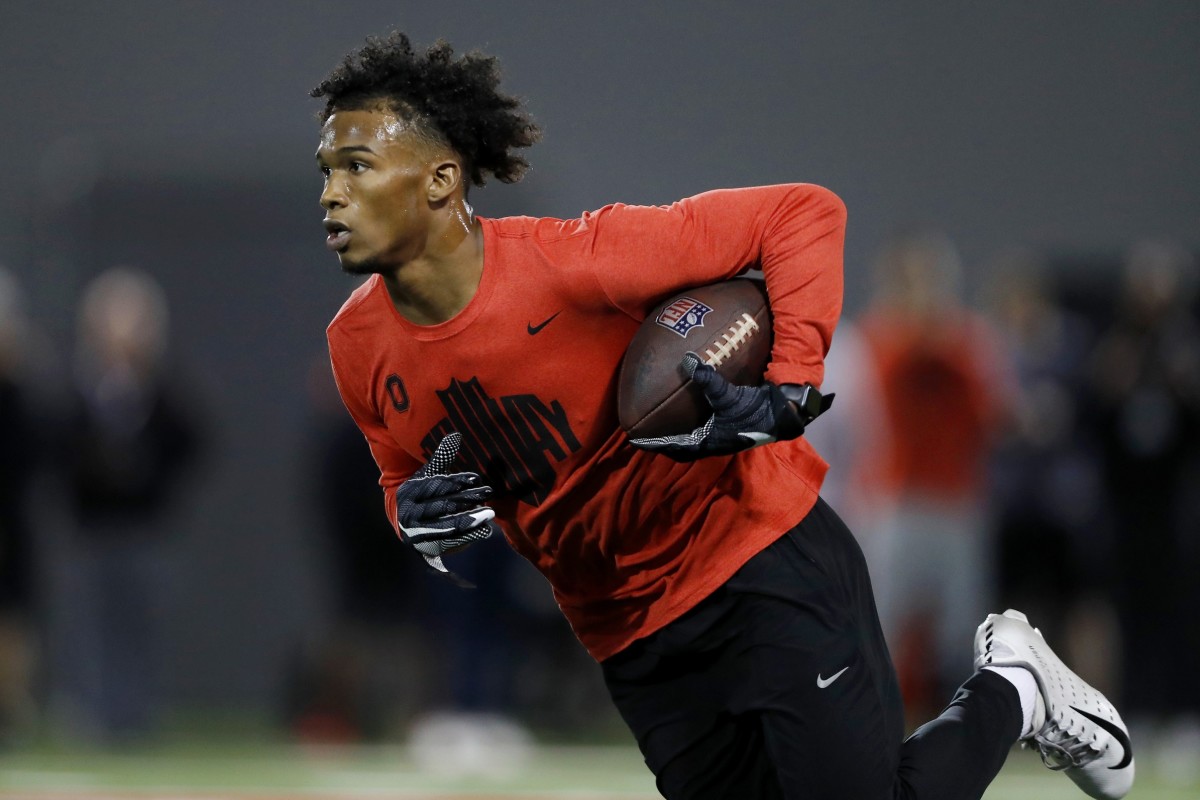
For Wilson, it’s all about his route-running. In PFF’s draft guide it says Wilson has “downright filthy route-running ability.”
That was evident every day at Ohio State, said Collin Gay, who reports on Ohio State for Rivals.com.
“A lot of people think he’s going to be the first wide receiver off the board and I tend to agree with them,” said Gay. “He’s a very good route runner, a very smart wide receiver, and has good hands.”
PFF compares him to Diontae Johnson, the Ringer called him “Odell Beckham Jr. on Red Bull” and CBS Sports’ Chris Trapasso compares him to Stefon Diggs. That’s pretty good company to be in.
Add in 4.32 40-yd dash speed, and Wilson was a consistent producer for Ohio State. He racked up 70 catches for 1,058 yards and 12 touchdowns in 2021. He’s shown great versatility in where he can play with experience in the slot and outside. That movability profiles well with Adam Thielen and Justin Jefferson and would work well in any bunch sets that Kevin O’Connell brings with him from the Sean McVay offense.
Ohio State’s Chris Olave
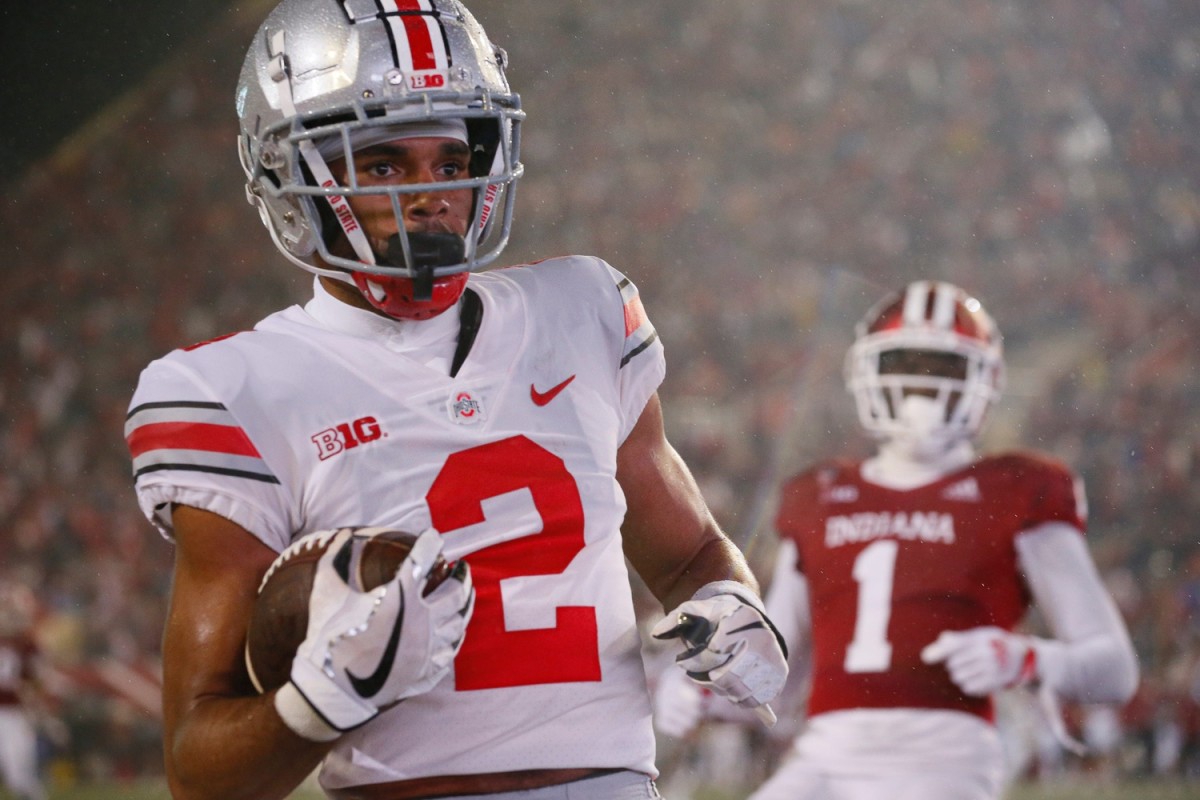
Chris Olave isn’t going to be the first wide receiver drafted and may not even be the first wide receiver drafted from Ohio State.
That’s always been the story for Olave.
“I think he’ll tell you this, he’s been doubted throughout his time at Ohio State,” Gay says. “That stems from his time as a three-star recruit… he’s driven off that. That’s where he came from, he’s had a gradual growing process.”
And while he never had a 1000-yard season. He set the Ohio State school record with 35 receiving touchdowns, the fourth-most in Big Ten Conference history, and ranks third in school history in receptions with 176 and fifth in receiving yards with 2,711.
In an offense like the Vikings, that already has weapons, Gay sees him as an ideal prospect to take the top off of a defense.
“He was always one of the guys that could consistently find his way into the end zone… and find those breakaway opportunities. He is fast, man. That can be what separates him,” Gay said.
He’s also one of the most NFL-ready wide receivers. For the Vikings that could be appealing as they look for immediate production to help the “competitive rebuild” while still having an eye on the long-term outlook. Olave is a short- and long-term fit.
Arkansas’ Treylon Burks
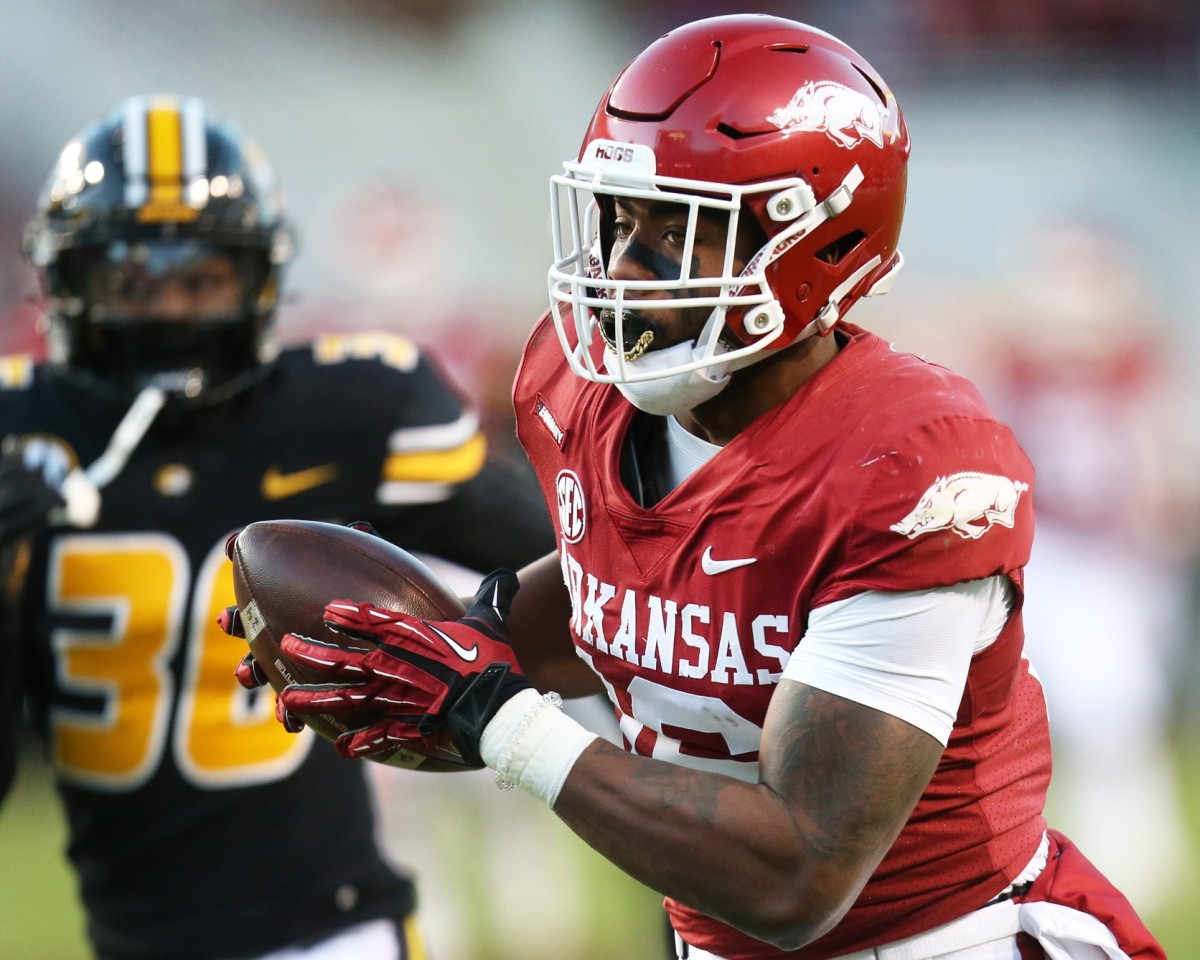
Burks has become the consensus fifth guy in these rankings with some analysts even moving him behind a few others like Jahan Dotson, Skyy Moore, and George Pickens.
That’s mostly because of a lackluster combine in which he ran a 4.55 40-yd dash.
But standing at 6’2, 225 pounds, his straight-line speed is not how he wins. He wins with his strength and burst.
“What makes him most dangerous is just his size and his frame. He can just power through people. He stands out in yards after the catch. He functions a little like a running back when he gets in space,” said Christina Long, Arkansas writer for the USA Today Network.
Because of that, Burks has drawn plenty of comparisons to Deebo Samuel in how he could be used. Long says that comparison is earned. He ranked sixth in the FBS in yards after the catch last season and was a major factor in the screen game. For the Vikings, Burks would be a very intriguing option to use on the outside as an X receiver going down the field and making big plays, but he should be used heavily in the screen game and in the slot, adding a big-receiver option in the middle of the field.
If a team can get creative in how they use Burks, as the 49ers do with Samuel, that’s how Burks will succeed. If a team tries to shoehorn him into a traditional wide receiver role, the chances he pans out diminishes, Long said.
“If they can find a way to use him that uses his size rather than force him to be a traditional wide receiver that’s where he’s going to thrive,” Long said.
